1.Identification
1.1 GHS Product identifier
| Product name | 1-Methylnaphthalene |
|---|
1.2 Other means of identification
| Product number | - |
|---|---|
| Other names | Naphthalene, 1-methyl- |
1.3 Recommended use of the chemical and restrictions on use
| Identified uses | For industry use only. Food additives -> Flavoring Agents |
|---|---|
| Uses advised against | no data available |
1.4 Supplier's details
| Company | MOLBASE (Shanghai) Biotechnology Co., Ltd. |
|---|---|
| Address | Floor 4 & 5, Building 12, No. 1001 North Qinzhou Road, Xuhui District, Shanghai, China |
| Telephone | +86(21)64956998 |
| Fax | +86(21)54365166 |
1.5 Emergency phone number
| Emergency phone number | +86-400-6021-666 |
|---|---|
| Service hours | Monday to Friday, 9am-5pm (Standard time zone: UTC/GMT +8 hours). |
2.Hazard identification
2.1 Classification of the substance or mixture
Acute toxicity - Oral, Category 4
Aspiration hazard, Category 1
2.2 GHS label elements, including precautionary statements
| Pictogram(s) |   |
|---|---|
| Signal word | Danger |
| Hazard statement(s) | H302 Harmful if swallowed H304 May be fatal if swallowed and enters airways |
| Precautionary statement(s) | |
| Prevention | P264 Wash ... thoroughly after handling. P270 Do not eat, drink or smoke when using this product. |
| Response | P301+P312 IF SWALLOWED: Call a POISON CENTER/doctor/…if you feel unwell. P330 Rinse mouth. P301+P310 IF SWALLOWED: Immediately call a POISON CENTER/doctor/… P331 Do NOT induce vomiting. |
| Storage | P405 Store locked up. |
| Disposal | P501 Dispose of contents/container to ... |
2.3 Other hazards which do not result in classification
none
3.Composition/information on ingredients
3.1 Substances
| Chemical name | Common names and synonyms | CAS number | EC number | Concentration |
|---|---|---|---|---|
| 1-Methylnaphthalene | 1-Methylnaphthalene | 90-12-0 | none | 100% |
4.First-aid measures
4.1 Description of necessary first-aid measures
General advice
Consult a physician. Show this safety data sheet to the doctor in attendance.
If inhaled
Fresh air, rest.
In case of skin contact
Remove contaminated clothes. Rinse and then wash skin with water and soap.
In case of eye contact
First rinse with plenty of water for several minutes (remove contact lenses if easily possible), then refer for medical attention.
If swallowed
Rinse mouth. Give a slurry of activated charcoal in water to drink. Rest. Refer for medical attention .
4.2 Most important symptoms/effects, acute and delayed
SYMPTOMS: Exposure to this compound may cause skin irritation. It may also cause photosensitization. The vapors, fumes or direct contact with the solid may be irritating to the eyes. Inhalation of the vapors may produce airway irritation, headache, nausea, weakness and collapse. Long term overexposure has led to corneal changes. Ingestion may lead to systemic poisoning involving the gastrointestinal tract, kidneys and blood-forming tissue. Individuals with erythrocytic glucose-6-phosphate dehydrogenase deficiency may be particularly susceptible to possible hemolytic effects. Individuals with a history of or pre-existing disease in eyes, mucous membranes, skin, blood-forming tissues or blood, liver or lungs may be at greater risk of adverse health effects when exposed to this material. ACUTE/CHRONIC HAZARDS: This compound can cause skin irritation and photosensitization. It may be harmful if inhaled or absorbed through the skin, and may be highly toxic if swallowed. When heated to decomposition this compound emits acrid smoke and fumes.
Harmful if inhaled. Liquid causes irritation of the eyes and skin and skin photosensitization. Harmful if swallowed. Chronic exposure may cause liver or kidney damage. (USCG, 1999)
4.3 Indication of immediate medical attention and special treatment needed, if necessary
Emergency and supportive measures: 1. Maintain an open air way and assist ventilation if necessary. 2. Treat coma and seizures if they occur. 3. Treat hemolysis and resulting hemoglobinuria if they occur by intravenous hydration and urinary alkalinization. /Naphthalene/
5.Fire-fighting measures
5.1 Extinguishing media
Suitable extinguishing media
If material on fire or involved in fire: Use water in flooding quantities as fog. Solid streams of water may be ineffective. Solid streams of water may spread fire. Use foam, dry chemical, or carbon dioxide. /Methylnaphthalenes, liquid/
5.2 Specific hazards arising from the chemical
This chemical is probably combustible.
This chemical is combustible.
5.3 Special protective actions for fire-fighters
Wear self-contained breathing apparatus for firefighting if necessary.
6.Accidental release measures
6.1 Personal precautions, protective equipment and emergency procedures
Use personal protective equipment. Avoid dust formation. Avoid breathing vapours, mist or gas. Ensure adequate ventilation. Evacuate personnel to safe areas. Avoid breathing dust. For personal protection see section 8.
6.2 Environmental precautions
Collect leaking and spilled liquid in sealable containers as far as possible. Absorb remaining liquid in sand or inert absorbent. Then store and dispose of according to local regulations. Do NOT let this chemical enter the environment.
6.3 Methods and materials for containment and cleaning up
If you spill this chemical, FIRST REMOVE ALL SOURCES OF IGNITION. Then, use absorbent paper to pick up all liquid spill material. Your contaminated clothing and absorbent paper should be sealed in a vapor-tight plastic bag for eventual disposal. Solvent wash all contaminated surfaces with 60-70% ethanol followed by washing with a soap and water solution. Do not reenter the contaminated area until the Safety Officer (or other responsible person) has verified that the area has been properly cleaned.
7.Handling and storage
7.1 Precautions for safe handling
Avoid contact with skin and eyes. Avoid formation of dust and aerosols. Avoid exposure - obtain special instructions before use.Provide appropriate exhaust ventilation at places where dust is formed. For precautions see section 2.2.
7.2 Conditions for safe storage, including any incompatibilities
Store in an area without drain or sewer access. Provision to contain effluent from fire extinguishing.You should store this material under ambient temperatures.
8.Exposure controls/personal protection
8.1 Control parameters
Occupational Exposure limit values
no data available
Biological limit values
no data available
8.2 Appropriate engineering controls
Handle in accordance with good industrial hygiene and safety practice. Wash hands before breaks and at the end of workday.
8.3 Individual protection measures, such as personal protective equipment (PPE)
Eye/face protection
Safety glasses with side-shields conforming to EN166. Use equipment for eye protection tested and approved under appropriate government standards such as NIOSH (US) or EN 166(EU).
Skin protection
Wear impervious clothing. The type of protective equipment must be selected according to the concentration and amount of the dangerous substance at the specific workplace. Handle with gloves. Gloves must be inspected prior to use. Use proper glove removal technique(without touching glove's outer surface) to avoid skin contact with this product. Dispose of contaminated gloves after use in accordance with applicable laws and good laboratory practices. Wash and dry hands. The selected protective gloves have to satisfy the specifications of EU Directive 89/686/EEC and the standard EN 374 derived from it.
Respiratory protection
Wear dust mask when handling large quantities.
Thermal hazards
no data available
9.Physical and chemical properties
| Physical state | ear colorless to light yellow liquid |
|---|---|
| Colour | Colorless liquid or oil |
| Odour | no data available |
| Melting point/ freezing point | 141°C(lit.) |
| Boiling point or initial boiling point and boiling range | 241°C(lit.) |
| Flammability | Combustible. |
| Lower and upper explosion limit / flammability limit | no data available |
| Flash point | 82°C(lit.) |
| Auto-ignition temperature | 528.89°C (USCG, 1999) |
| Decomposition temperature | no data available |
| pH | no data available |
| Kinematic viscosity | no data available |
| Solubility | less than 1 mg/mL at 17.78°C |
| Partition coefficient n-octanol/water (log value) | log Kow of 3.87 |
| Vapour pressure | 23 mm Hg at 25°C ; 31 mm Hg at 50°C; 38 mm Hg at 70°C |
| Density and/or relative density | 1.025 |
| Relative vapour density | 4.91 (Relative to Air) |
| Particle characteristics | no data available |
10.Stability and reactivity
10.1 Reactivity
no data available
10.2 Chemical stability
This chemical is stable under normal laboratory conditions. Solutions of this chemical in water, DMSO, 95% ethanol or acetone should be stable for 24 hours under normal lab conditions.
10.3 Possibility of hazardous reactions
Moderate fire risk.METHYLNAPHTHALENE is incompatible with strong oxidizing agents. It is also incompatible with peroxides and oxygen.
10.4 Conditions to avoid
no data available
10.5 Incompatible materials
This compound is incompatible with strong oxidizers.
10.6 Hazardous decomposition products
When heated to decomposition it emits acrid smoke and irritating fumes
11.Toxicological information
Acute toxicity
- Oral: LD50 Rat oral 1840 mg/kg
- Inhalation: no data available
- Dermal: no data available
Skin corrosion/irritation
no data available
Serious eye damage/irritation
no data available
Respiratory or skin sensitization
no data available
Germ cell mutagenicity
no data available
Carcinogenicity
A4; Not classifiable as a human carcinogen.
Reproductive toxicity
no data available
STOT-single exposure
no data available
STOT-repeated exposure
no data available
Aspiration hazard
no data available
12.Ecological information
12.1 Toxicity
- Toxicity to fish: LC50; Species: Salmo trutta (Brown Trout) yearling; Conditions: freshwater, static, 10°C, pH 7.6-8.0, hardness 210-290 mg/L CaCO3, alkalinity 165-200 mg/L CaCO3, dissolved oxygen >50%; Concentration: 8400 ug/L for 48 hr /formulation
- Toxicity to daphnia and other aquatic invertebrates: EC50; Species: Daphnia magna (Water Flea) age 4-6 days, length 1.5 mm; Conditions: freshwater, static, 23°C, pH 6-7, dissolved oxygen 5-9 mg/L; Concentration: 10 mmol/cu m for 48 hr (95% confidence interval: 3-40 mmol/cu m) /> or =97% purity/; Effect: Immobilization.
- Toxicity to algae: EC50; Species: Pseudokirchneriella subcapitata (Green Algae); Conditions: static; Concentration: 12000 ug/L for 14 days; Effect: growth, general /formulation
- Toxicity to microorganisms: no data available
12.2 Persistence and degradability
AEROBIC: Aerobic aqueous screening test data showed a 84 and 95% loss of 0.1 ppm methylnaphthalenes in 1 and 5.6 days, respectively, for acclimated sewage inoculum; methylnaphthalenes did not degrade with unacclimated sewage(1). No loss of 1-methylnaphthalene was observed for a 5 day BOD test with sewage seed at 20°C(2). When marine water was used as an inoculate, 1- and 2-methylnaphthalene at respective concentrations of 0.045 and 0.067 ppm disappeared within 10 days under aerobic conditions at 25°C(3). Using the Japanese MITI I procedure, <5% degradation of methylnaphthalene occurred in 28 days; for the MITI II test with a freshwater inoculum, 49 and 72% of the 1- and 2-isomers were lost in 28 days under aerobic conditions at 25°C(4). A marine water die-away study with sediment inoculum from Dunstaffnage Bay, Oban, Scotland showed a 92 and 88.5% loss of 1- and 2-methylnaphthalene, respectively, contained in crude oil after 7 days at 20°C(5). Methylnaphthalenes, present at 0.5 ppm carbon, was completely removed within 14 days from acclimated fresh-well water grab samples from Tuffenwies and Zurich, Switzerland, with a pH of 8.0, at 10 and 25°C and microbial populations of 300-400 cells/mL(6). Grab samples of groundwater aquifer soil that had acclimated to creosote wastes containing methylnaphthalene were able to degrade methylnaphthalenes, present at 0.02 to 0.12 ppm, under aerobic conditions at 25°C in less than a week(7). An average loss of 5.6 and 6.5% per week was observed for autoclaved controls(7). Unacclimated material from the same aquifer degraded methylnaphthalenes at an average rate of 3.5% per week; however autoclaved controls lost methylnaphthalenes at an overall rate of about 11% per week(7). Methylnaphthalene, present in light Arabian crude oil, showed little biodegradation in sea water, but when nutrients were added biodegradation increased; with sea water, sediment and nutrients, 100% biodegradation was seen in <10 days(8).
12.3 Bioaccumulative potential
After 2, 3, 5 and 6 weeks exposure, the average bioconcentration factors for 1- and 2-methylnaphthalene in the muscle tissue of Coho salmon (Onchorhynchus kisutch) were 30, 85, 160 and 60, respectively(1). After 2 weeks exposure, the average bioconcentration factor for 1- and 2-methylnaphthalene in the muscle tissue, liver and gills of Starry flounder (Platichthys stellatus) was 420, 1800 and 355, respectively(1). BCFs of 360-810 and 360-620 were found using carp (Cyprinus carpio) which were exposed for 60 days at respective concentrations of 1-methylnaphthalene of 1 and 10 ug/L(2). According to a classification scheme(3), BCF values of <30 are low and >1000 are very high. Methylnaphthalenes may be metabolized by some aquatic organisms(SRC).
12.4 Mobility in soil
Using a structure estimation method based on molecular connectivity indices(1), the Koc of methylnaphthalenes can be estimated to be 2530(SRC). However, 1-methylnaphthalene has reported Koc values of 2290(2) and 4400(3) and 2-methylnaphthalene has a reported Koc value of 4350(2) and measured Koc value of 8500(3). According to a classification scheme(4), these Koc values suggest that methylnaphthalenes are expected to have slight to no mobility in soil.
12.5 Other adverse effects
no data available
13.Disposal considerations
13.1 Disposal methods
Product
The material can be disposed of by removal to a licensed chemical destruction plant or by controlled incineration with flue gas scrubbing. Do not contaminate water, foodstuffs, feed or seed by storage or disposal. Do not discharge to sewer systems.
Contaminated packaging
Containers can be triply rinsed (or equivalent) and offered for recycling or reconditioning. Alternatively, the packaging can be punctured to make it unusable for other purposes and then be disposed of in a sanitary landfill. Controlled incineration with flue gas scrubbing is possible for combustible packaging materials.
14.Transport information
14.1 UN Number
| ADR/RID: UN3082 | IMDG: UN3082 | IATA: UN3082 |
14.2 UN Proper Shipping Name
| ADR/RID: ENVIRONMENTALLY HAZARDOUS SUBSTANCE, LIQUID, N.O.S. |
| IMDG: ENVIRONMENTALLY HAZARDOUS SUBSTANCE, LIQUID, N.O.S. |
| IATA: ENVIRONMENTALLY HAZARDOUS SUBSTANCE, LIQUID, N.O.S. |
14.3 Transport hazard class(es)
| ADR/RID: 9 | IMDG: 9 | IATA: 9 |
14.4 Packing group, if applicable
| ADR/RID: III | IMDG: III | IATA: III |
14.5 Environmental hazards
| ADR/RID: no | IMDG: no | IATA: no |
14.6 Special precautions for user
no data available
14.7 Transport in bulk according to Annex II of MARPOL 73/78 and the IBC Code
no data available
15.Regulatory information
15.1 Safety, health and environmental regulations specific for the product in question
| Chemical name | Common names and synonyms | CAS number | EC number |
|---|---|---|---|
| 1-Methylnaphthalene | 1-Methylnaphthalene | 90-12-0 | none |
| European Inventory of Existing Commercial Chemical Substances (EINECS) | Listed. | ||
| EC Inventory | Listed. | ||
| United States Toxic Substances Control Act (TSCA) Inventory | Listed. | ||
| China Catalog of Hazardous chemicals 2015 | Listed. | ||
| New Zealand Inventory of Chemicals (NZIoC) | Listed. | ||
| Philippines Inventory of Chemicals and Chemical Substances (PICCS) | Listed. | ||
| Vietnam National Chemical Inventory | Listed. | ||
| Chinese Chemical Inventory of Existing Chemical Substances (China IECSC) | Listed. | ||
16.Other information
Information on revision
| Creation Date | Aug 12, 2017 |
|---|---|
| Revision Date | Aug 12, 2017 |
Abbreviations and acronyms
- CAS: Chemical Abstracts Service
- ADR: European Agreement concerning the International Carriage of Dangerous Goods by Road
- RID: Regulation concerning the International Carriage of Dangerous Goods by Rail
- IMDG: International Maritime Dangerous Goods
- IATA: International Air Transportation Association
- TWA: Time Weighted Average
- STEL: Short term exposure limit
- LC50: Lethal Concentration 50%
- LD50: Lethal Dose 50%
- EC50: Effective Concentration 50%
References
- IPCS - The International Chemical Safety Cards (ICSC), website: http://www.ilo.org/dyn/icsc/showcard.home
- HSDB - Hazardous Substances Data Bank, website: https://toxnet.nlm.nih.gov/newtoxnet/hsdb.htm
- IARC - International Agency for Research on Cancer, website: http://www.iarc.fr/
- eChemPortal - The Global Portal to Information on Chemical Substances by OECD, website: http://www.echemportal.org/echemportal/index?pageID=0&request_locale=en
- CAMEO Chemicals, website: http://cameochemicals.noaa.gov/search/simple
- ChemIDplus, website: http://chem.sis.nlm.nih.gov/chemidplus/chemidlite.jsp
- ERG - Emergency Response Guidebook by U.S. Department of Transportation, website: http://www.phmsa.dot.gov/hazmat/library/erg
- Germany GESTIS-database on hazard substance, website: http://www.dguv.de/ifa/gestis/gestis-stoffdatenbank/index-2.jsp
- ECHA - European Chemicals Agency, website: https://echa.europa.eu/
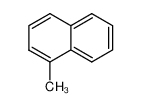


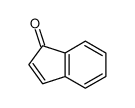





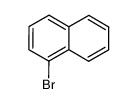

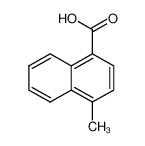
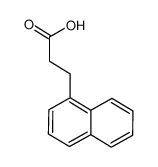
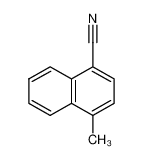









-
-

-
-
-

-
-
-

-
-
-
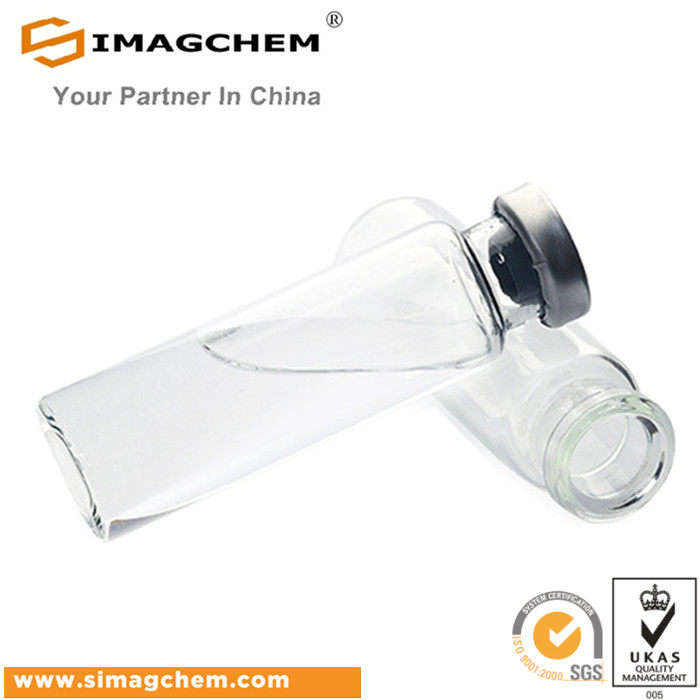
-
-
-

-
-
-

-
-
-

-
-
-

-
-
-
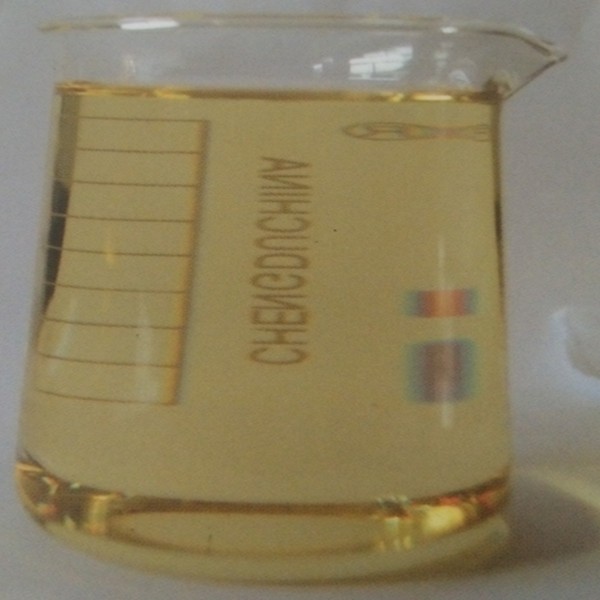
-
-
-

-
More Suppliers>>Baoji Guokang Bio-Technology Co., Ltd
CHINA
Purity: 99%
Lead Time: 3 Day(s)
Price: -
Wenzhou Win-Win Chemical Co., Ltd.
CHINA
Purity: 98%
Lead Time: 3 Day(s)
Price: -
Hangzhou J&H Chemical Co., Ltd.
CHINA
Purity: 98%
Lead Time: 7 Day(s)
Price: -
Xiamen Zhixin Chemical Co., Ltd.
CHINA
Purity: 99%
Lead Time: 3 Day(s)
Price: -
Hangzhou DayangChem Co., Ltd
CHINA
Purity: 98%
Lead Time: 7 Day(s)
Price: -
Skyrun Industrial Co., Limited
CHINA
Purity: 99%
Lead Time: 7 Day(s)
Price: -
Hangzhou Bingochem Co., Ltd.
CHINA
Purity: 98%
Lead Time: 7 Day(s)
Price: -
Elsa Biotechnology Co.,Ltd.
CHINA
Purity: %
Lead Time: Day(s)
Price: -
Shandong Aoertong Chemical Co., Ltd.
CHINA
Purity: >95%
Lead Time: 7 Day(s)
Price: -
CHINA
Purity: 99%
Lead Time: 3 Day(s)
Price: Min $100 /桶